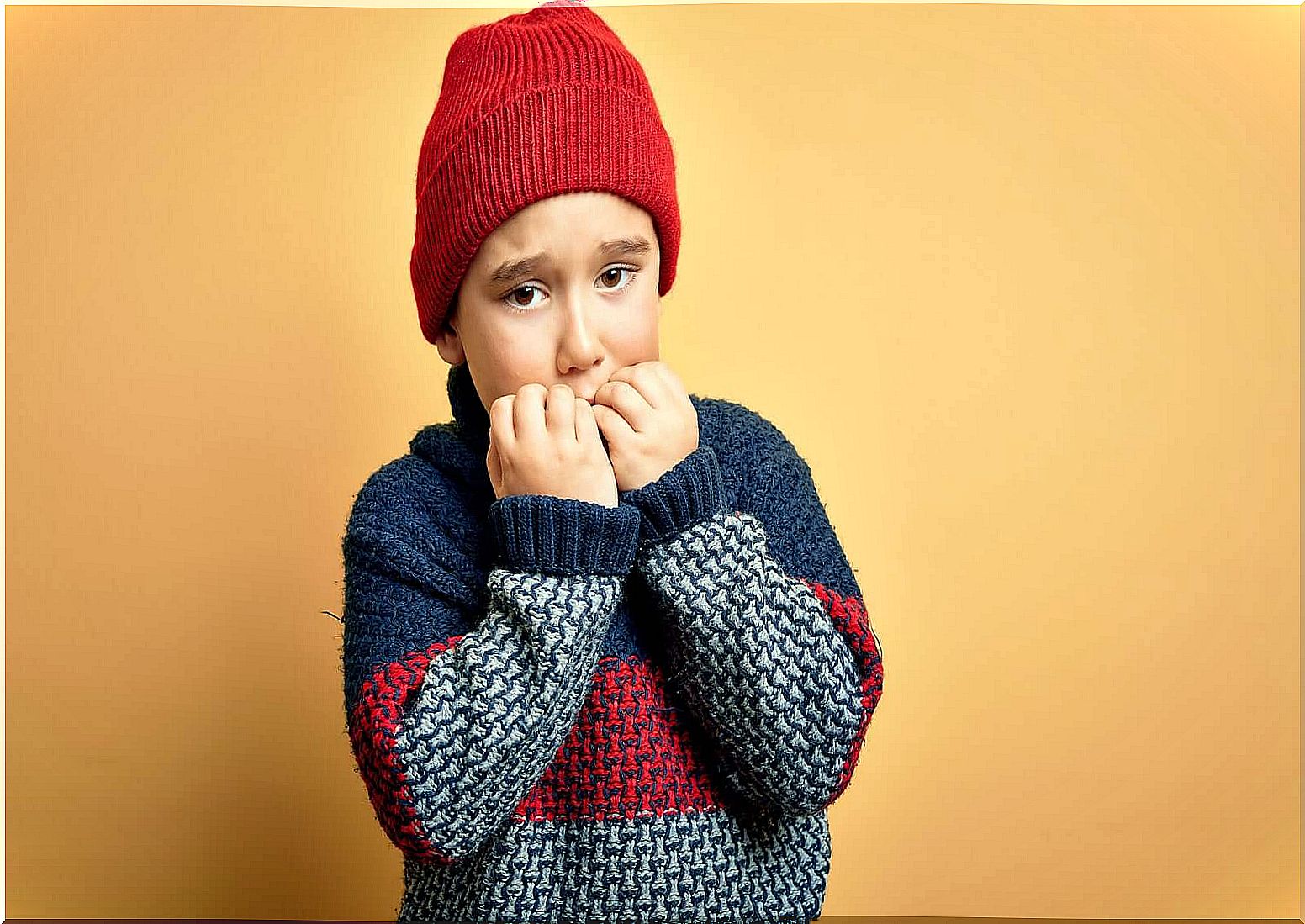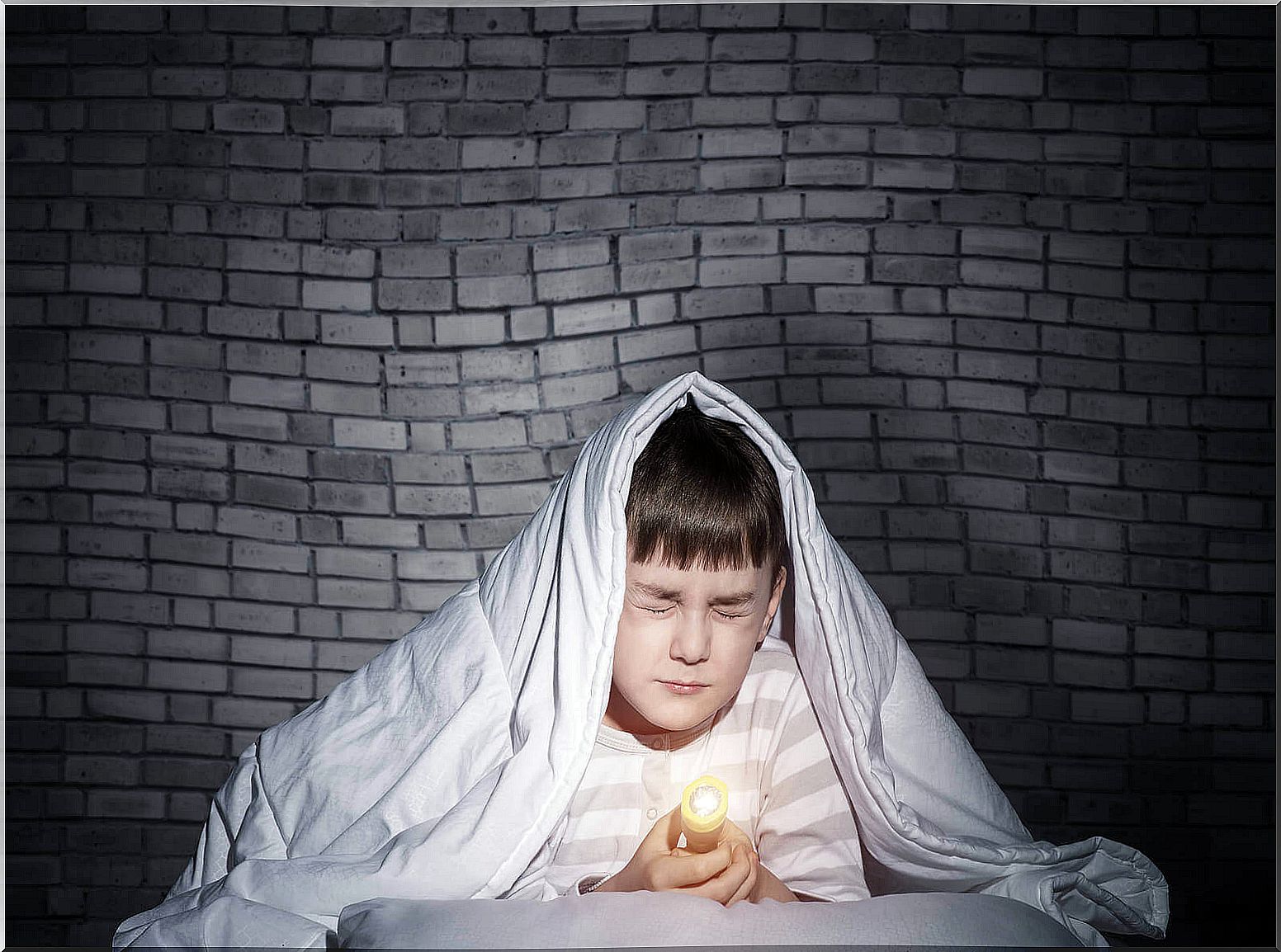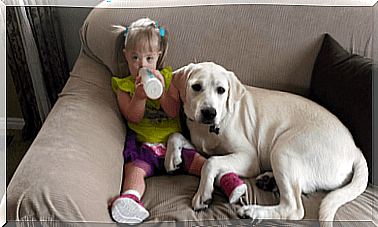How To Detect Phobias In Children And Prevent Them From Getting Worse

Raising and educating children is a complex task for which we are not instructed. At certain times of growth, fears may arise that make parents wonder if this is something normal and evolutionary or if it is a troubling issue that requires intervention.
While in many cases these fears are natural and transitory, in others they can get worse if we don’t act in time. Therefore, it is necessary to know how to detect phobias in children when they are still in the early stages.
Childhood is a very important stage. At these ages, children are like sponges, totally permeable to the information they receive from the environment.
Therefore, the attitudes developed over these years will become part of your personality. Likewise, the coping tools they learn will constitute a fundamental part of their resources for their development in life.
Therefore, the action of parents in the face of a possible childhood phobia is very important. How to deal with it can be decisive for the child’s future. In this way, if, as parents, we offer the necessary resources, the child will be able to move forward and we will prevent this phobia from taking hold and affecting their daily lives.
How to detect phobias in children?

Know evolutionary fears
The most important thing is to know what are the typical and natural fears of each stage of growth. There are certain evolutionary fears that are common to children of a certain age. They fulfill a biological function and disappear over time. In general terms, they are as follows:
- Up to six months: fear of loud noises and lack of support.
- 7-12 months: fear of strangers and separation from key attachment figures.
- 1-2 years: Fear of physical injury, the dark and animals are added.
- 3-4 years: fear of natural phenomena such as storms and reluctance towards unknown objects are added.
- 5-6 years: fear of getting sick or that someone loved is hurt. It is also feared that evil beings might appear in the dark.
- 7 to 8 years old: social fears begin, such as the fear of being embarrassed or being rejected.
- 9-12 years: fear of lack of social acceptance increases, and fear of poor school performance and fear of death are added.
Distinguish fear from phobia
The first step is, therefore, to check whether we are facing a fear that matches the child’s age. However, this is not enough, as it is possible for an evolutionary fear to turn into a phobia. To detect if this is happening, we have to look at the following questions:
- The fear, anguish and discomfort that the child experiences are excessive and disproportionate, much greater than one might expect.
- The child tries to avoid situations related to what he fears at all costs or runs away from them as quickly as possible. If she cannot avoid them, she supports them despite suffering enormous discomfort.
- This fear interferes with your daily life significantly and prevents you from functioning properly. This can manifest as an inability to sleep, socialize or perform daily activities.
- Over time, fear does not disappear and increases.

How to act after detecting phobias in children?
Above all, it is necessary for parents to show understanding and respect for the child’s fear. We must not ridicule her or minimize her feelings.
So, we must try to make the little one face , in a progressive and gradual way, the feared stimulus. But for that, we have to empower him and accompany him. Strengthening their self-esteem is essential for the child to feel able to face the challenge.
Use your creativity to employ tricks to help reduce exposure anxiety. For example, an anti-monster spray or a cape to transform your child into a superhero. As she deals with the dreaded stimulus, her fear will disappear and her self-confidence will increase.
Positively reinforce each child’s approach to their fears and, above all, show through your attitude that you understand them, that you are by their side and that you are sure they will succeed. Without a doubt, if the situation continues, seeking out a child psychologist will be the best decision.








